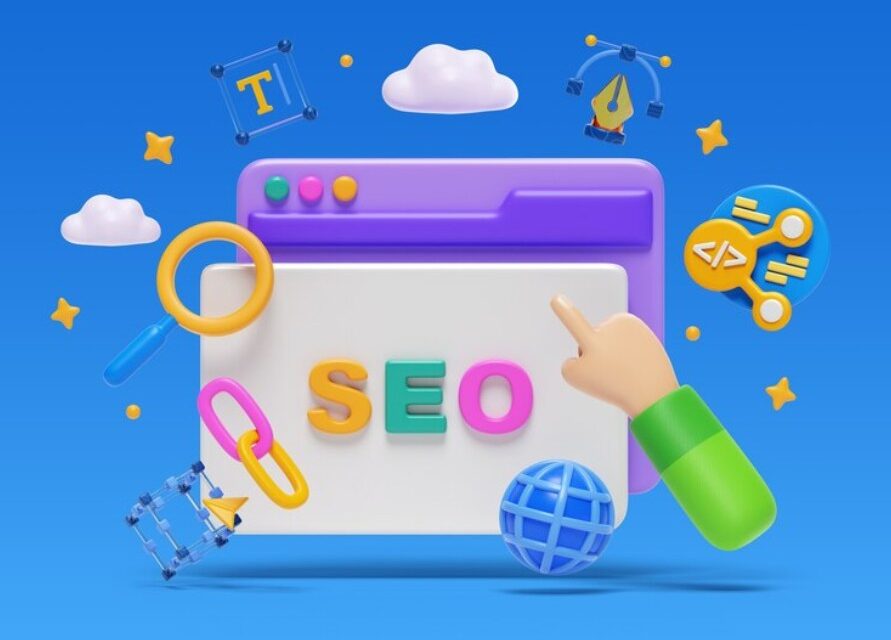
The Ultimate Guide to On-Page SEO: Tips for Boosting Your Website’s Visibility

Search engine optimization (SEO) is essential for improving your website’s visibility in search results. While SEO is often divided into various segments, one of the most critical elements is on-page SEO. It focuses on optimizing individual web pages to rank higher and earn more relevant traffic in search engines. This guide will break down the key aspects of on-page SEO, offering actionable tips to help you improve your website’s search engine ranking.
Whether you’re a beginner or looking to refresh your knowledge, this article will walk you through the basics and beyond. One of the best ways to ensure your strategy is up-to-date is to follow an on-page SEO audit checklist, which can help identify areas for improvement.
What is On-Page SEO?
On-page SEO refers to all the measures you can take directly within your website to improve its position in search rankings. It involves optimizing elements like content, HTML tags (title, meta, and headers), images, and internal links.
Unlike off-page SEO, which focuses on external signals such as backlinks and social media, on-page SEO deals with factors you can directly control. When done right, on-page SEO not only improves your ranking but also enhances the user experience, keeping visitors on your site longer and converting them into customers.
Why Is On-Page SEO Important?
Before diving into the specific tactics, let’s discuss why on-page SEO is essential. Search engines, like Google, aim to provide the most relevant and high-quality results to users. On-page SEO helps search engines understand your website and its content better, making it more likely that your pages will rank for relevant queries.
Additionally, well-optimized content ensures that users have a great experience when navigating your site, whether that’s through faster loading times, better readability, or clear navigation. All these factors combined can significantly affect how both search engines and users perceive your site.
Key Elements of On-Page SEO
To get started with on-page SEO, it’s important to focus on several key elements. Each of these plays a role in improving your site’s overall performance on search engines.
1. Title Tags
The title tag is one of the most important on-page SEO elements. It appears in the search engine results pages (SERPs) as the clickable headline for a given result and is critical for usability, SEO, and social sharing. Here are some tips for writing effective title tags:
- Keep it under 60 characters to ensure it displays fully in search results.
- Include your primary keyword naturally.
- Make it compelling to encourage clicks.
For example, a good title for this post might be “The Ultimate Guide to On-Page SEO.”
2. Meta Descriptions
Meta descriptions are the short snippets of text that appear under the title tag in search results. They should succinctly describe the content of the page and entice users to click through. While meta descriptions don’t directly impact rankings, they can affect click-through rates, which indirectly influences SEO.
- Keep meta descriptions under 160 characters.
- Include a call-to-action (CTA) like “Learn more” or “Get started.”
- Add relevant keywords naturally, but don’t stuff them.
3. Header Tags (H1, H2, H3, etc.)
Header tags help organize your content and make it easier for both users and search engines to understand the structure of your page. The H1 tag is usually reserved for the title of the page, while H2s and H3s break the content into more digestible sections.
- Use one H1 tag per page and make sure it includes the main keyword.
- Use H2 and H3 tags to break up content logically.
- Ensure each section provides value and is not stuffed with keywords.
4. URL Structure
A clean, descriptive URL structure is another important factor for on-page SEO. Search engines use URLs to help understand what a page is about, so keeping them concise and relevant is crucial.
- Keep URLs short and to the point.
- Include primary keywords where appropriate.
- Use hyphens to separate words, as underscores are less SEO-friendly.
5. Optimized Content
The heart of on-page SEO is your content. You need to provide value to your audience while ensuring it’s optimized for the right keywords. But avoid keyword stuffing—Google’s algorithms are advanced enough to recognize this and may penalize your site.
- Use your primary keyword naturally throughout the text, aiming for a keyword density of around 1–2%.
- Make sure your content answers the user’s query. Think about search intent: are they looking for information, a solution, or to make a purchase?
- Add internal links to other relevant pages on your site.
- Update old content to keep it fresh and relevant.
6. Image Optimization
Images can enhance user engagement, but they need to be optimized for SEO as well. Search engines cannot “see” images, so they rely on the image file name, alt text, and surrounding content to understand them.
- Use descriptive file names that include keywords (e.g., “on-page-seo-checklist.jpg”).
- Write clear, concise alt text that accurately describes the image.
- Compress images to improve page load time without compromising quality.
7. Internal Linking
Internal links are hyperlinks that point to other pages on your website. They help search engines understand the structure of your site and can also keep users engaged by directing them to relevant content.
- Use keyword-rich anchor text when linking to other pages.
- Ensure the linked content is relevant and useful to the reader.
- Don’t overdo internal linking—only link when it adds value.
8. Mobile-Friendliness
With mobile traffic now making up more than half of web traffic globally, ensuring your website is mobile-friendly is crucial for both user experience and SEO. Google uses mobile-first indexing, meaning it primarily uses the mobile version of a website for indexing and ranking.
- Use responsive design so that your site adapts to different screen sizes.
- Make sure text is readable without zooming.
- Ensure buttons and links are easy to click on mobile devices.
9. Page Speed
Page speed is a ranking factor that has gained increasing importance. Users expect pages to load quickly, and slow loading times can lead to higher bounce rates, which negatively impact SEO.
- Use tools like Google PageSpeed Insights to test and improve your page speed.
- Minimize HTTP requests by reducing the number of elements on a page.
- Compress images and use browser caching.
How to Conduct an On-Page SEO Audit
Now that you understand the key elements of on-page SEO, it’s time to ensure your website is up to standard. Conducting an on-page SEO audit checklist regularly will help you identify weak areas and improve them. Here’s a simplified checklist to get you started:
1. Review your title tags and meta descriptions to ensure they are unique and include relevant keywords.
2. Check that your content is high-quality, answers user queries, and is free from keyword stuffing.
3. Inspect your URL structures—are they clean, concise, and descriptive?
4. Analyze your internal links to ensure they are relevant and useful.
5. Test your page speed and mobile-friendliness using free tools.
6. Verify that images are optimized with appropriate file names, alt text, and compression.

Common On-Page SEO Mistakes to Avoid
Even seasoned SEO experts can make mistakes that harm their rankings. Here are a few common pitfalls to watch out for:
- Keyword Stuffing: Overloading your content with keywords can harm readability and lead to penalties from search engines.
- Duplicate Content: Ensure that all content on your website is unique, as duplicate content can confuse search engines and dilute your rankings.
- Neglecting Mobile Optimization: Failing to optimize for mobile can hurt both your rankings and your user experience.
Conclusion
On-page SEO is a powerful tool that can make or break your website’s visibility on search engines. By focusing on essential elements like title tags, meta descriptions, content optimization, and page speed, you can boost your site’s performance. Regular audits and updates are key to staying competitive in the ever-evolving world of SEO.
Remember, the ultimate goal of on-page SEO is to create a user-friendly, valuable experience that both search engines and users appreciate. By following best practices and staying up to date with SEO trends, you can ensure your website ranks higher, attracts more traffic, and provides an optimal experience for visitors.
























